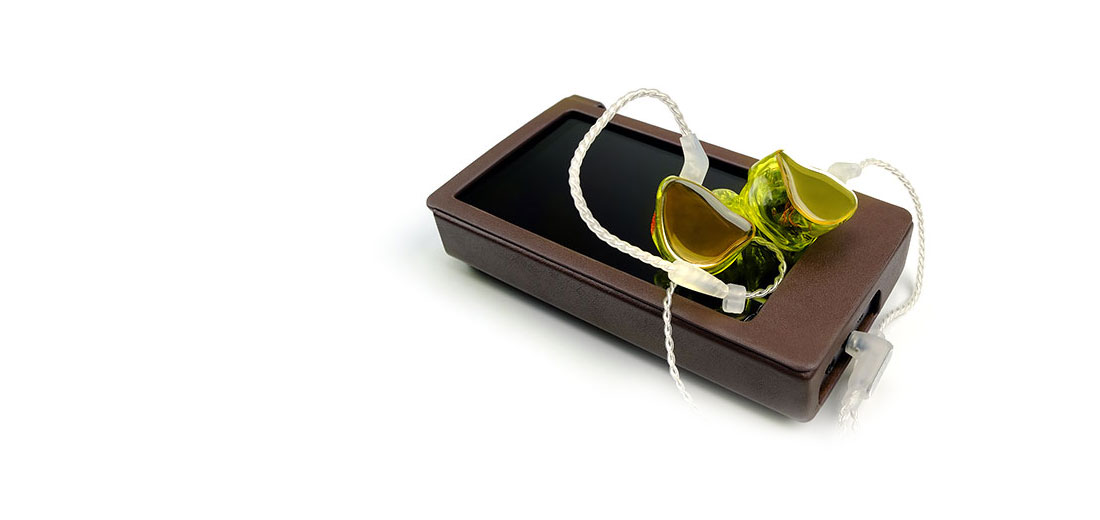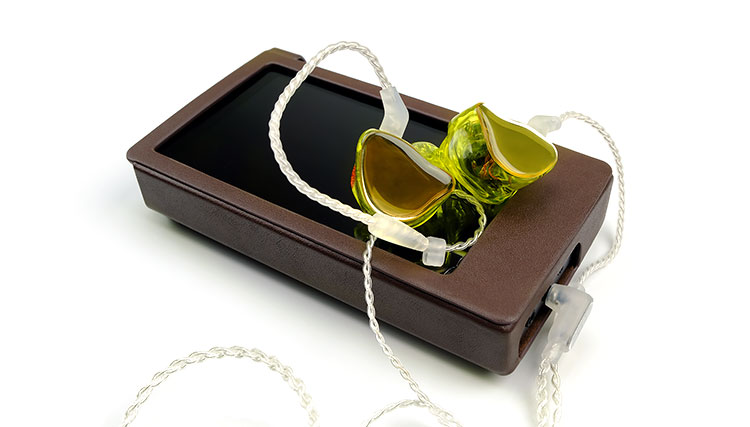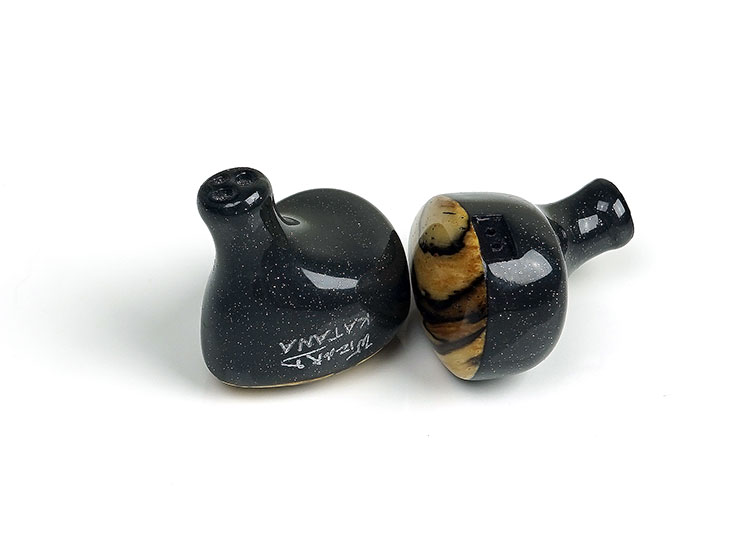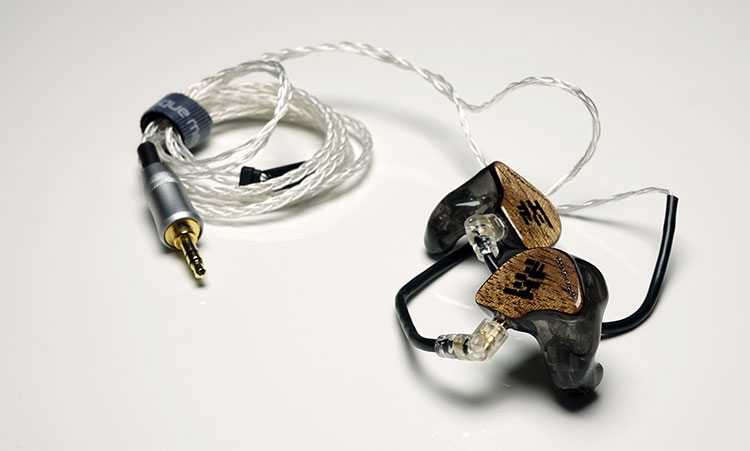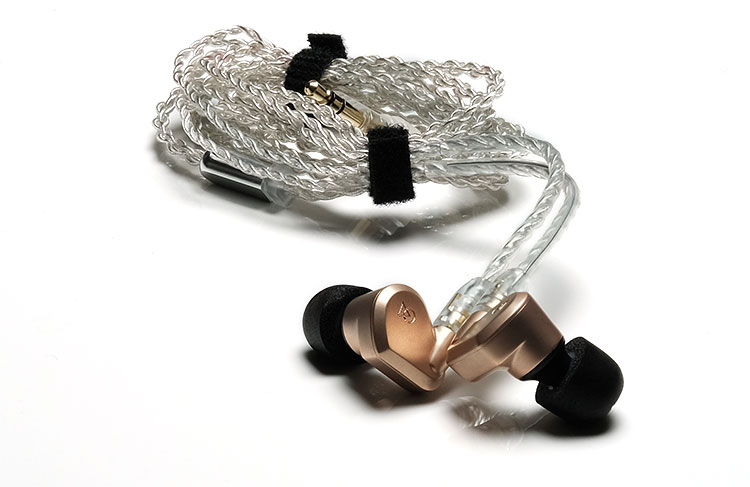Matchability
Efficiency
The W900 has an output impedance of 16 ohms with a sensitive rating of 107.5dB which pretty much means it will not need a huge amount of voltage for volume and even smartphones will do an adequate job but given it medium sensitivity rating it will scale better with better quality amps.
Smartphones
The voltage on the ZTE Axon 7 tapped out at 8/10, I simply could not get higher without causing possible hearing damage. I was actually impressed with the dynamics for a change using the W900 with this particular smartphone.
It doesn’t quite have the expansive staging quality of stronger amps and better sources but the FR was quite tight and nothing felt brittle or terribly underpowered. I was particularly impressed with the dynamic driver’s response which sounded well extended and powerful despite the weaker amp inside the ZTE.
Noise
It is also an excellent performer with regard to noise control even on amps known to generate background hiss on efficient IEMs. DAPs will not be an issue either with most being able to handle the W900 fairly easily and within acceptable parameters.
I could detect no noticeable noise using the FiiO X5iii, LP L3PRO, Opus#3, Cayin i5, and AK380 in either balanced or unbalanced mode. Balanced mode on the DX200 was the most impressive in terms of power and dynamics. Combined with the Twag v4 cable, the W900 was incredibly clear, powerful and spacious sounding.
Scaling
Actually, it is not how quiet the W900 is that should be the main concern rather just how well you can drive it and for this, I do recommend a little bit of portable amping. Much like the Vega in some ways, the W900 really goes up a notch with better output power or a quality amp signal.
Tonal Bias
Tonal bias, though a preference thing, should also be considered carefully with the W900. I would tend to veer away from warmer amps or amps that are too mid-focused. I would also avoid amps and sources that are quite flat in nature or overly neutral. You really want to push out the dynamics and maximize the staging potential as much as possible with the W900 as that is where the strengths of this CIEM lie.
ALO RX/V5 & RHA CL1
Amps such as the RX and the L1 from ALO Audio and RHA, when paired with the W900, produced a cleaner and more energetic presentation than the smoother V5 from ALO Audio for instance. The V5 is mid-centric and will take a bit of weight away from the W900’s bass whereas the RX and L1 go for a punchier more SS style delivery that suits the W900 quite well.
The RX, in particular, was superb with the W900, particularly combined with the likes of Daniel Deluxe’s vast sounding synth-wave albums giving me every ounce of space I could wish for and tremendous sub-bass extension without overcooking everything.
Ibasso PB3
The same could be said also for the lower tier PB3 from iBasso which I love but is more mid-centric and smooth sounding much like the V5. This didn’t gel as well for me with the W900’s already smooth sound and didn’t give it that lower treble lift or that dynamic low-end punch that I got from the RX.
Oppo HA-2SE
Oppo’s HA-2SE is somewhere in between the RX/L1 and the PB3. When paired with the W900 I got excellent detail, low to zero noise and a clean, flat and quick-paced sounding presentation. It is also very neutral and will flatten out the bass response a little compared to what the L1 and RX gave me.
Neutral heads may like that but personally, I think this is a key selling point of the W900 and something that should be embraced and not EQ’ed out. You can elect to throw on the bass boost with the HA-2SE but I found it produced an incoherent sound which is another big strength of the W900.
Select Comparisons
Noble Audio Katana
US$2099
Technicality
The Katana is a 9 BA driver IEM/CIEM and retails in custom format from around similar starting prices to the W900 from AAW. It is significantly easier to drive though given the W900 ships a dynamic driver that should not come as a surprise.
The AAW though will perform better on noisier amps than the Katana, such as the ALO Audio V5 and both do like a nice quality portable amp though the W900 has slightly superior scaling qualities.
The Katana tends to work nicely with amps that are not too thin, sharp or bright soundings whereas the W900 is slightly in the opposite direction for me sounding better with neutral amps than warmer amps.
Tonality
Tonally the Katana is the cleaner and brighter of the two with the W900 sounding a little smoother and more natural in its presentation.
The W900 low end has a more traditional dynamic driver delivery with a slightly fuller sound but the way AAW has tuned it with the low pass filter it doesn’t run away from the rest of the presentation either so it sounds impressively controlled. This allows the all BA 9 driver Katana to stay competitive in the sub-bass power with a quick and tight response and a tonal quality not too far off a dynamic driver signature.
The W900 though has a fuller-sounding midbass and lower treble with more of a balanced harmonic quality compared to the slight upper harmonics bias and cleaner attack of the Katana. The Katana had tremendous detail and precision and sounds very spacious in the mids. The W900 sounds equally spacious but has a more natural feel to its timbre compared to the more neutral tones of the Katana’s instrumental timbre. Vocal texture and forwardness are a bit more emphasized on the W900 than the Katana but not by a wide margin.
The treble is where both excel but for different reasons. The Katana is the more energetic and forward top end with the W900 electing to subdue the 4-5k range just a bit more and aim for a more neutral, almost relaxed presentation. However, both have a fantastic extension, detail, and articulation. The W900 staging is more about width with good depth and the Katana is more about height with good width. Both have tremendous imaging, the W900 is realistic-sounding and accurate but the Katana for me is world-class turn on a dime stuff and hard to beat.
Unique Melody Maestro V2
US$1,979.00
Technicality
The Maestro V2 is a 12 BA CIEM rated at 20 ohms and 109dB so not only is a similar price point but has similar performance figures, at least on paper. In testing, I found the W900 just to be marginally the harder of the two to drive though both exhibit good noise control and show much lower levels of hiss with noisier amps than sensitive IEMs.
Form factor wise the W900 is the much bigger of the two customs due to the single DD needing a bit of space so the V2 will sit a bit more flush in your ear as a result. It also uses protruding 2-pin connectors that do offer a little bit more strength with those angled socket connectors used by UM as stock over traditional 2 pin connections used by AAW.
Tonality
The V2 has a darker signature than the neutral and smooth tonality of the W900. Whilst both are not hugely airy the W900 will sound much airier and more extended than the V2 side by side. The V2 is tuned from the bottom up with a more prominent mid-bass boosting and generally higher levels of quantity right up to the lower mid-range.
However, the W900 bass is more tactile for me with better definition and a more natural sound. The W900 has a bass response that is far more coherent and generally more accurate compared to the overly colored V2.
Such is the darkness and relaxed treble of the V2 it makes the mids and treble on the W900 clear and brighter sounding with more treble energy. Vocals also have more space and sound a bit further forward. To be honest the V2 will do that to most balanced CIEMs. The detail on both is excellent actually, you cannot fault the Maestro V2 in that respect just the tuning on the top end is very relaxed and lacking in a lot of air which gives the edge to the W900.
Staging wise the W900 is much wider and taller but doesn’t rumble quite as hard as the V2 which more centered on the low to mids than the top end. It is also a little bit more intimate than the expansive W900’s staging qualities which benefit hugely from the dynamic driver.
Campfire Audio Dorado
US$999.00
Technicality
We thought we would throw in the Dorado as our highest priced hybrid universal IEM just as a contrast to the W900 and see how a sub $1k hybrid would fare. The Dorado is a single 8mm beryllium DD and a dual high-frequency BA hybrid design.
It has very similar ratings on paper to the W900 at 15 ohms and 107dB compared to 16 ohms and 107dB but in reality is much more sensitive than the W900 and needs far less voltage and power to reach optimal driving levels. Noise levels on the Dorado are excellent though it does exhibit a tiny bit more noise on more powerful amps and tube amps such as the V5 but otherwise very good.
 Tonality
Tonality
Tonally the Dorado is a more colored and musical sounding hybrid presentation with a higher degree of low-end power and physicality. It is the calling card really of the Dorado with a distinctly u-shaped presentation compared to the flatter and more coherent W900 response. Those looking for a warmer meatier and heavier hitting low end will enjoy the Dorado’s performance but it comes at a cost of a more recessed and darker midrange compared to the open and spaciousness sounding mids of the W900.
Both have a detailed but smooth or slightly relaxed treble performance and the Dorado’s resonating chamber technology does a grand job of extracting plenty of detail out of the BA driver configuration but it is not as detailed sounding or as extended as the W900 and sounds a little thinner in comparison.
Staging wise the W900 has a much superior width with a more spacious midrange and better headroom. The Dorado has superior depth and physicality but the warmth and quantity of the low-end leave the mids struggling in comparison.
Overall the Dorado is a much more musical and muscular sound compared to the more reference level, spacious, and detailed sound of the W900.
Our Verdict
Hybrid Evolution
This is the first time I have heard a TOTL hybrid since the Merlin back in 2011 and my how things have progressed since then. The Merlin made me a believer in all things IEM and whilst I think blockbusting CIEMs such as the 62 Audio A18 lead the way in general technicalities the W900 does represent to me the best interpretation I have heard to date in terms of hybrid presentations.
It is the only hybrid I have heard to date that has a proper coherent reference type sound that remains smooth and incredibly well-detailed right to the very top. All other hybrids have tended to focus purely on the dynamic delivery and produce layers of bass to mask a decent BA performance but nothing “audiophile”.
If anything, the BA in the hybrid is usually underworked or overcooked and yes phase issues do creep in. The W900 avoids relying too much on the DD and instead offers a very smooth and integrated presentation that I think works. I do advise though to grab a solid SS portable amp and push it harder if you can for optimal performance.
Caveats
Things to improve on? I do think the online ordering system could do with a bit of modernization, I am not sure how many will buy straight out without some reference to potential options and the W900 page doesn’t show them front and center.
The coloring on the Artisan series pictures may need some side profiles in the pictures and not just the top down. That green hue in my yellow design spoiled it a bit and it is not immediately noticeable from the top-down as in the pictures shown online.
Also, the tuning filters could do with a release just to offer even more added value to the W900. For those who want a touch more upper mid to lower treble bite these could well make the difference. However, since they are not out yet, it’s pure guesswork but if there was one area I could focus on it would be that little 4-6k dip.
Who Should Get it?
If you are after a reference sound with a natural but controlled low-end dynamic driver sound, outstanding staging capability as well as delivering endless top-end extension then the W900 is worthy of your consideration.
W900 Technical Specifications
- Reference Proprietary 9mm Dynamic Driver + 8 Balanced Armature Drivers
- TruXross 4 Way Passive Crossover (Physical Low Pass Filter on Dynamic Bass Driver + Electronic 3 Way Passive Crossover)
- Frequency Range 18Hz-40000Hz
- Sensitivity 107.5db SPL @ 1mW
- Impedance: 16+-2 Ohm @ 1kHz
- THD <= 0.2% @ 1kHz

